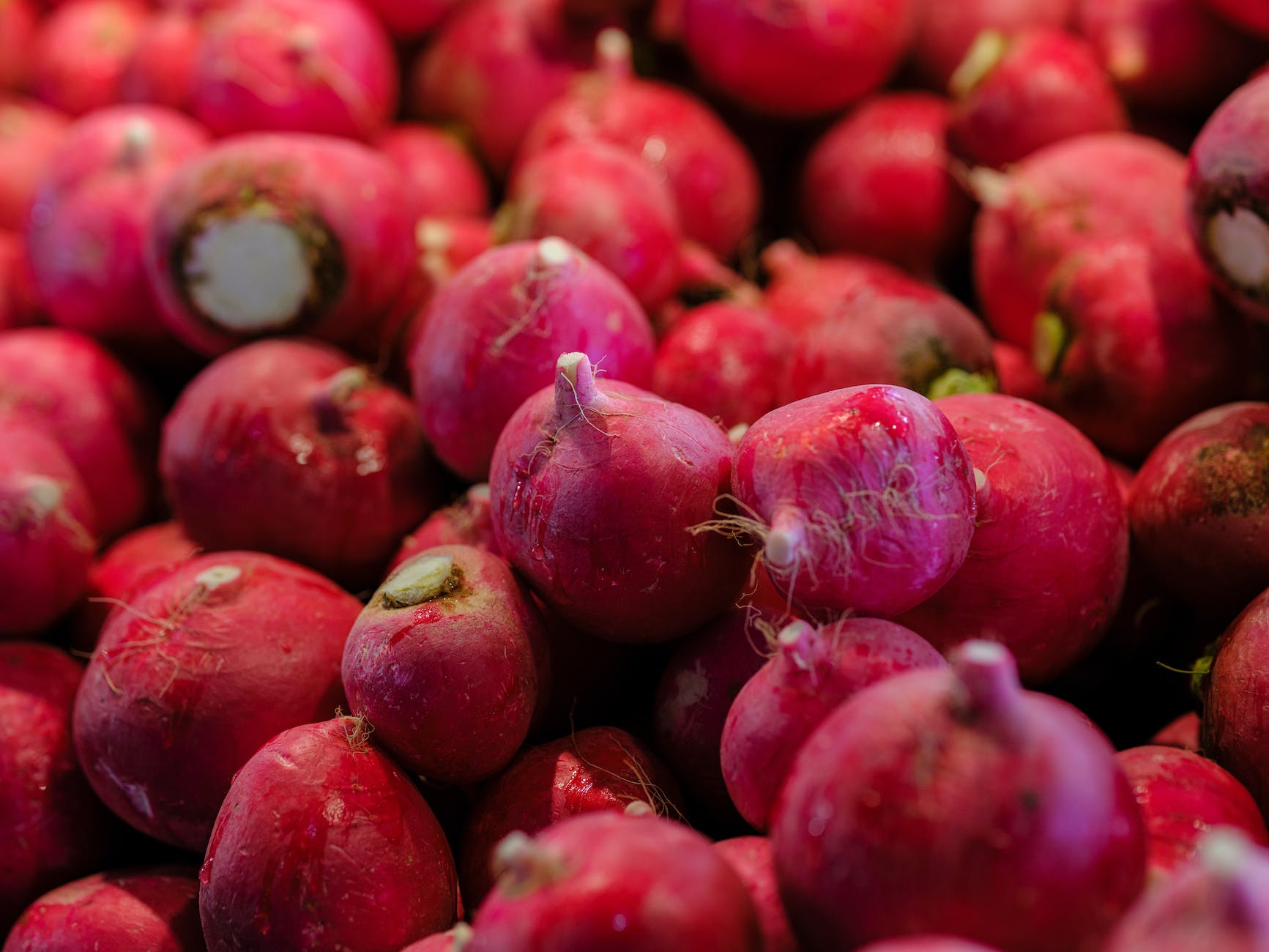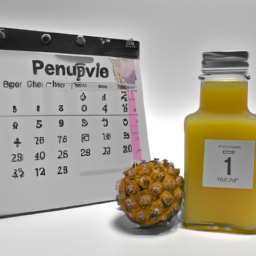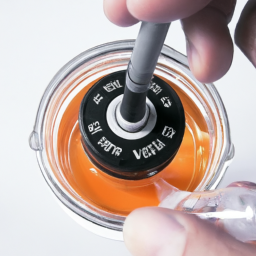Having gone through the discomfort and pain of a urinary tract infection (UTI) myself, I understand all too well the relentless burning sensation in the lower belly that seems never to subside. This is why the idea of using cranberry juice as a natural solution for UTIs captured my interest immediately.
But like many people, I wondered how long it would take for cranberry juice to work and if it would be effective enough to replace antibiotics. According to a study published in the Journal of Urology, cranberry juice can help prevent UTIs by preventing bacteria from adhering to the bladder wall. This makes it more difficult for bacteria to multiply and cause an infection.
But the question remains, how long does it take for cranberry juice to work? In this article, we will explore the science behind cranberry juice as a natural remedy for UTIs, the factors that can affect treatment time, and the recommended dosage and consumption. We’ll also discuss potential side effects, other natural remedies, prevention strategies, and when it’s important to seek medical attention.
Key Takeaways
- The time it takes for cranberry juice to work can vary depending on several factors, including the severity of the infection, the individual’s immune system, and the dosage and consumption of cranberry juice.
- Proanthocyanidins found in cranberry juice can start working in just a matter of hours and prevent bacteria from adhering to the walls of the bladder and urinary tract.
- Cranberry juice cannot replace antibiotics in severe infections but can be helpful in preventing and treating mild UTIs.
- If symptoms persist after two days of consuming cranberry juice, it’s recommended to seek medical attention.
Understanding Urinary Tract Infections
If you’ve ever experienced the pain and discomfort of a urinary tract infection (UTI), you know how important it is to understand the condition and its causes.
UTIs are caused by bacteria, usually Escherichia coli (E. coli), that enter the urethra and travel up to the bladder. Women are more prone to UTIs than men due to their shorter urethra.
Symptoms of UTI include frequent urination, pain or burning during urination, strong-smelling urine, and cloudy urine. If left untreated, UTIs can spread to the kidneys and cause serious complications.
To prevent UTIs, it’s important to practice good hygiene, such as wiping from front to back after using the bathroom and urinating after sex. Drinking plenty of water and avoiding irritating substances like caffeine and alcohol can also help. However, if you do get a UTI, cranberry juice may provide relief.
Cranberry Juice as a Natural Remedy
I’d like to discuss the potential benefits of cranberry juice as a natural remedy for urinary tract infections (UTIs). Cranberries contain proanthocyanidins, which prevent bacteria from adhering to the walls of the bladder and urinary tract. Studies suggest that consuming cranberry juice or supplements may reduce the risk of recurrent UTIs.
As someone who has experienced the discomfort and inconvenience of UTIs, I’m interested in exploring the effectiveness of cranberry juice as a preventative measure or treatment option.
Properties of Proanthocyanidins
The amazing thing about proanthocyanidins in cranberry juice is that they can start working their magic in just a matter of hours. These compounds are responsible for preventing the adhesion of harmful bacteria, particularly E. coli, to the walls of the urinary tract.
Here are three things you might want to know about the properties of proanthocyanidins:
-
Proanthocyanidins are flavonoids that can be found in a variety of foods, including grapes, apples, and cocoa.
-
These compounds are known for their antioxidant properties, which means they can help protect cells from oxidative damage caused by free radicals.
-
Proanthocyanidins can also help improve circulation, reduce inflammation, and support cardiovascular health.
While the health benefits of proanthocyanidins are numerous, their effectiveness in treating UTIs is one of the most important. By preventing harmful bacteria from sticking to the urinary tract, proanthocyanidins can help reduce the severity and frequency of UTIs.
Effectiveness in Treating UTIs
With proanthocyanidins in your corner, you can say goodbye to pesky urinary tract infections and feel as fit as a fiddle. Studies have shown that proanthocyanidins, the active ingredient in cranberry juice, can effectively prevent and treat UTIs.
UTIs are a common condition, with prevalence rates as high as 50% in women and 12% in men. Antibiotic resistance is also becoming a growing concern in the treatment of UTIs, making natural remedies like cranberry juice even more important.
Research has shown that proanthocyanidins prevent bacteria from attaching to the bladder wall, thereby reducing the risk of infection. In addition, proanthocyanidins have been shown to have anti-inflammatory properties, which can help alleviate symptoms of an existing UTI.
While cranberry juice cannot replace antibiotics in severe infections, it can be a helpful tool in preventing and treating mild UTIs. As we delve further into the topic of how cranberry juice works, it’s important to understand the specific mechanisms by which proanthocyanidins exert their beneficial effects.
How Cranberry Juice Works
Cranberry juice works by preventing bacteria from adhering to the walls of the bladder. This is due to the presence of proanthocyanidins, which are compounds that inhibit the bacteria from sticking to the bladder.
As a result, the bacteria are flushed out of the body through urine, leading to the prevention of urinary tract infections. In addition to its benefits in treating UTIs, cranberry juice is also believed to aid in detoxification, helping to rid the body of harmful toxins.
Drinking cranberry juice can be a great way to maintain urinary tract health, but it’s important to note that the effects may not be immediate. There are various factors that affect the time it takes for cranberry juice to work, such as the severity of the infection, the amount and frequency of consumption, and individual differences in metabolism.
These factors will be discussed further in the next section.
Factors That Affect Treatment Time
Now that we know how cranberry juice works, it’s important to understand that the time it takes for cranberry juice to work can vary depending on several factors. Factors affecting treatment time include the severity of the infection, the individual’s immune system, and the dosage and consumption of cranberry juice.
The severity of the infection is a significant factor that can affect treatment time. A mild infection may clear up in a few days, while a severe infection may require longer treatment.
Additionally, an individual’s immune system plays a role in how long it takes for cranberry juice to work. A stronger immune system may be able to fight off the infection more quickly than a weaker one.
Lastly, the dosage and consumption of cranberry juice also affect the treatment time. It’s important to follow the recommended dosage and consumption of cranberry juice to ensure maximum effectiveness.
Moving forward, it’s important to understand the recommended dosage and consumption of cranberry juice, which we’ll be discussing next.
Recommended Dosage and Consumption
Following the recommended dosage and consumption of cranberry juice is crucial in ensuring its maximum effectiveness in treating urinary tract infections. The recommended daily dosage of cranberry juice is 8 to 16 ounces, which is equivalent to 240 to 480 milliliters.
However, it’s important to note that cranberry juice is not a substitute for antibiotics in treating a urinary tract infection. Therefore, if symptoms persist after two days, it’s recommended to seek medical attention.
Consumption habits also play a role in the effectiveness of cranberry juice in treating urinary tract infections. It’s best to consume cranberry juice on an empty stomach or at least 30 minutes before a meal to allow for optimal absorption. Drinking cranberry juice with a meal may decrease its effectiveness due to the presence of other substances in the food that could interfere with the absorption of the active compounds in cranberry juice.
By following these dosage recommendations and consumption habits, individuals can maximize the potential benefits of cranberry juice in treating urinary tract infections. However, it’s important to note that there may be potential side effects associated with cranberry juice consumption.
Potential Side Effects
As someone who’s interested in taking cranberry juice, I should be aware of potential side effects. Two key points to consider are allergies and sensitivities, which can range from mild to severe. These may include symptoms such as hives, itching, and difficulty breathing.
Additionally, cranberry juice can interact with certain medications, such as blood thinners. This interaction can potentially cause negative effects. It’s important to speak with a healthcare provider before starting to consume cranberry juice. This will help to understand how it may impact individual health.
Allergies and Sensitivities
If you’re one of those people who thinks cranberry juice is the solution to all your allergies and sensitivities, maybe it’s time to rethink your strategy. While cranberry juice has been touted for its potential health benefits, it’s important to note that it may not be suitable for everyone.
Common misconceptions about cranberry juice include the belief that it can cure allergies and sensitivities. However, there is no evidence to support this claim. Instead of relying solely on cranberry juice, it’s important to explore alternative treatments that may be more effective for managing allergies and sensitivities.
This may include working with a healthcare provider to identify trigger foods or environmental factors, using nasal sprays or antihistamines, or implementing lifestyle changes such as reducing stress and practicing good sleep hygiene. By taking a comprehensive approach to managing allergies and sensitivities, you may be able to achieve better outcomes than simply drinking cranberry juice.
With that said, it’s important to also consider how cranberry juice may interact with any medications you are taking, which we will explore in the next section.
Interactions with Medications
As we’ve discussed in the previous section, some individuals may experience allergies or sensitivities to cranberry juice. However, it’s also important to note that cranberry juice can interact with certain medications.
Some medications, such as warfarin and aspirin, can increase the risk of bleeding when taken with cranberry juice. In contrast, some medications, such as antibiotics, can have reduced effectiveness when taken with cranberry juice. Therefore, it’s important to take medication precautions and consult with a healthcare provider before consuming cranberry juice, especially if you’re taking any medications.
In addition to medication precautions, it’s also important to follow dosing guidelines when consuming cranberry juice. Drinking too much cranberry juice can lead to gastrointestinal discomfort and potential side effects. It’s recommended to consume one to two glasses of cranberry juice per day and to choose a juice that’s low in added sugars.
By following medication precautions and dosing guidelines, you can safely incorporate cranberry juice into your diet as a natural remedy for urinary tract infections.
Moving forward, let’s explore other natural remedies that can complement the use of cranberry juice.
Other Natural Remedies
When it comes to natural remedies for urinary tract infections, there are a few options that have shown promise.
Personally, I’ve tried D-Mannose, garlic, and probiotics with varying degrees of success.
Studies have shown that D-Mannose, a type of sugar, can prevent bacteria from attaching to the bladder wall.
Garlic has antimicrobial properties that can help fight off infections.
Probiotics, specifically those containing lactobacilli, can also help restore the balance of good bacteria in the urinary tract.
D-Mannose
You’ll find that D-Mannose, a natural sugar found in cranberries, may work faster than cranberry juice alone in treating urinary tract infections. D-Mannose supplements are available in powder or capsule form, and dosage recommendations vary depending on the severity of the infection. While both cranberry juice and D-mannose are effective in preventing and treating UTIs, studies have shown that D-mannose may be more effective in treating acute UTIs due to its ability to attach to E. coli bacteria, the most common cause of UTIs, and prevent them from attaching to the bladder wall.
To further emphasize the benefits of D-mannose, here are three key points to consider:
- D-mannose has been shown to have fewer side effects than antibiotics, making it a safer alternative for those who cannot take antibiotics or are prone to recurrent UTIs.
- D-mannose is a natural sugar that is safe for most people to take, including pregnant women and children.
- While cranberry juice may help prevent UTIs, it may not be as effective in treating acute infections as D-mannose.
Moving on to the next topic, garlic has also been found to have natural antibacterial properties that may help with UTI prevention and treatment.
Garlic
Now that we’ve discussed D-Mannose and its benefits, let’s move on to another natural remedy that is often used to treat urinary tract infections – garlic. Garlic, a member of the Allium family, has been used for its medicinal properties for centuries. It contains a compound called allicin, which has antibacterial and antifungal properties that can help fight off infections.
Aside from its ability to fight infections, garlic has several other benefits. It can help improve heart health by lowering blood pressure and cholesterol levels. Additionally, it has antioxidant properties that can help protect the body against oxidative damage. To reap the benefits of garlic, it’s recommended to consume it raw or lightly cooked. The recommended dosage is one to two cloves per day.
Moving on to the next topic, probiotics can also be beneficial for urinary tract health.
Probiotics
Probiotics, known as the "good bacteria,"can be beneficial in maintaining a healthy balance in the urinary tract. The use of antibiotics can disrupt this balance, leading to the overgrowth of harmful bacteria and increasing the risk of infections.
Probiotics work by replacing the harmful bacteria with beneficial ones, reducing the chances of developing infections. There are various sources of probiotics, including fermented foods like yogurt, kefir, sauerkraut, and kimchi. Probiotic supplements are also available over the counter and can be taken daily to help maintain a healthy urinary tract.
However, it’s important to consult a healthcare provider before taking any supplements, especially if you’re taking other medications or have underlying health conditions. When experiencing symptoms of a urinary tract infection, it’s crucial to seek medical attention promptly.
Delayed treatment can lead to complications such as kidney damage or sepsis. Therefore, it’s essential to be aware of the symptoms and seek medical attention if they persist or worsen.
When to Seek Medical Attention
If symptoms persist or worsen after consuming cranberry juice, it may be time to seek medical attention. While cranberry juice is effective in preventing and treating UTIs, it’s important to recognize when its use is no longer sufficient.
Some signs of a worsening UTI include fever, severe pain or discomfort in the lower abdomen or back, blood in the urine, and frequent urges to urinate despite little to no urine output. If you experience any of these symptoms, it’s recommended that you seek medical attention immediately.
Your healthcare provider may prescribe antibiotics or other medications to help treat the infection. It’s important to complete the full course of antibiotics as prescribed, even if symptoms improve, to ensure the infection is fully treated and to prevent it from returning.
To prevent future UTIs, several strategies can be implemented, such as staying hydrated, urinating regularly and completely, wiping from front to back after using the restroom, and avoiding irritating feminine products. By taking these preventative measures, you can reduce your risk of developing a UTI and avoid the need for medical attention in the future.
Prevention Strategies
When it comes to preventing urinary tract infections, I’ve found that there are three key strategies that work well for me.
The first is maintaining good hygiene habits, such as wiping front to back and urinating after sex.
The second is making smart dietary choices, like staying hydrated and avoiding foods that can irritate the bladder.
And finally, making lifestyle changes, such as quitting smoking and managing stress, can also help reduce the risk of UTIs.
By implementing these strategies, I’ve been able to significantly decrease my chances of developing a UTI.
Hygiene Habits
Maintaining good hygiene habits is crucial for preventing UTIs. It’s essential to practice personal hygiene daily. Here are three simple tips to keep in mind:
-
Always wipe from front to back after using the toilet to prevent bacteria from the anus from spreading to the urethra.
-
Wear cotton underwear and avoid tight-fitting clothing that can trap moisture and create a breeding ground for bacteria.
-
Take a shower instead of a bath, and avoid using harsh soaps or bubble baths that can irritate the genital area.
By following these hygiene habits, you can reduce your risk of developing a UTI. However, maintaining good hygiene is just one part of the equation. The next section will explore the role of dietary choices in preventing UTIs.
Dietary Choices
To prevent UTIs, you should consider incorporating foods that are high in antioxidants and probiotics into your diet. A balanced nutrition is essential to maintain a healthy urinary tract. Foods that are rich in antioxidants, such as cranberries, blueberries, and pomegranates, can help prevent the growth of bacteria in the urinary tract. Probiotics, found in yogurt and kefir, can also help maintain a healthy balance of good bacteria in the gut and urinary tract.
Hydration is also important for preventing UTIs. Drinking plenty of water throughout the day can help flush out bacteria from the urinary tract. Aim for at least 8 cups of water a day, and try to limit your intake of caffeine and alcohol, which can irritate the bladder and worsen UTI symptoms. Incorporating these dietary choices into your daily routine can help prevent UTIs and maintain a healthy urinary tract.
Additionally, making lifestyle changes such as practicing good hygiene habits and wearing breathable cotton underwear can also help prevent UTIs.
Lifestyle Changes
Now that we’ve discussed the importance of dietary choices in improving our health, let’s dive into another crucial aspect of a healthy lifestyle: lifestyle changes.
In my personal experience, making healthy habits a part of my daily routine has immensely improved my overall well-being. Self-care is an essential component of a healthy lifestyle, and it includes taking care of our physical, mental, and emotional health.
Incorporating regular exercise, getting enough sleep, and keeping stress levels in check are some of the lifestyle changes that can have a significant impact on our health. Engaging in physical activity, such as jogging, swimming, or practicing yoga, not only keeps our body fit but also releases endorphins, which help reduce stress and improve mood.
Getting adequate rest is equally important, as it allows our body to repair and rejuvenate. Additionally, practicing mindfulness and relaxation techniques, such as meditation or deep breathing exercises, can help manage stress levels and enhance emotional well-being.
By prioritizing self-care and making healthy habits a part of our daily routine, we can significantly improve our quality of life.
Frequently Asked Questions
Can cranberry juice cure a urinary tract infection on its own?
As someone who has experienced a urinary tract infection, I understand the appeal of natural remedies like cranberry juice. However, it’s important to note that relying on cranberry juice alone may not be effective and can contribute to antibiotic resistance.
How often should I drink cranberry juice to prevent UTIs?
I drink cranberry juice every day to prevent UTIs, exaggerating its effectiveness to emphasize its importance. The best time to drink cranberry juice is in the morning, and studies suggest consuming 8-16 ounces daily for optimal prevention.
Does the type of cranberry juice I drink affect its effectiveness?
The type of cranberry juice I drink can affect its effectiveness in preventing UTIs. Research suggests that higher doses and more frequent consumption of cranberry juice types with higher concentrations of PACs may be more effective.
Can cranberry supplements be used instead of juice for UTI treatment?
Taking cranberry supplements can provide the same benefits as drinking cranberry juice for UTI treatment. Dosage recommendations vary, so it’s important to talk to a healthcare provider. Personally, I find the convenience of supplements to be a plus. As they say, prevention is better than cure.
Is it safe to drink cranberry juice while pregnant or breastfeeding?
As a healthcare provider, I recommend discussing safe dosage of cranberry juice with your doctor during pregnancy or breastfeeding. Though it may offer some benefits, potential risks such as increased acidity levels should be considered.
Conclusion
Well, it appears that cranberry juice may take some time to work its magic. While some studies have shown that it can reduce the frequency of urinary tract infections, it’s important to note that this remedy may not work for everyone.
Plus, there are several factors that can affect the treatment time, including the severity of the infection, the dosage and consumption of cranberry juice, and individual differences in physiology. But fear not, dear reader.
If cranberry juice doesn’t do the trick, there are other natural remedies and prevention strategies that can help ward off urinary tract infections. And if all else fails, don’t hesitate to seek medical attention. After all, there’s no shame in admitting that sometimes, the best solution is a trip to the doctor.
In the meantime, bottoms up!
Ilana has been a vegan for over 10 years. She originally made the switch for health reasons, but soon found herself becoming more and more passionate about the ethical and environmental implications of a vegan lifestyle. Ilana is the author of The Graceful Kitchen, a blog all about veganism. She loves to cook up delicious and nutritious vegan meals, and share her recipes with others who are interested in leading a cruelty-free life. Ilana is also a strong advocate for using whole foods as the foundation of a healthy diet, and believes that going vegan is one of the best ways to achieve this.










